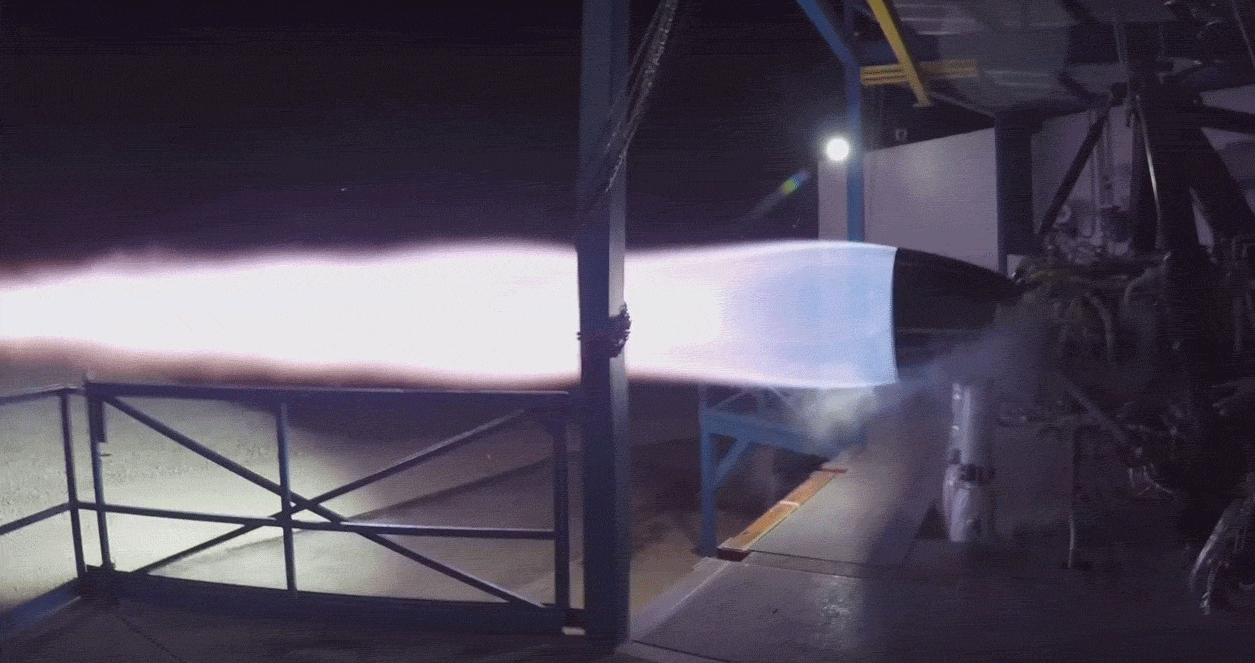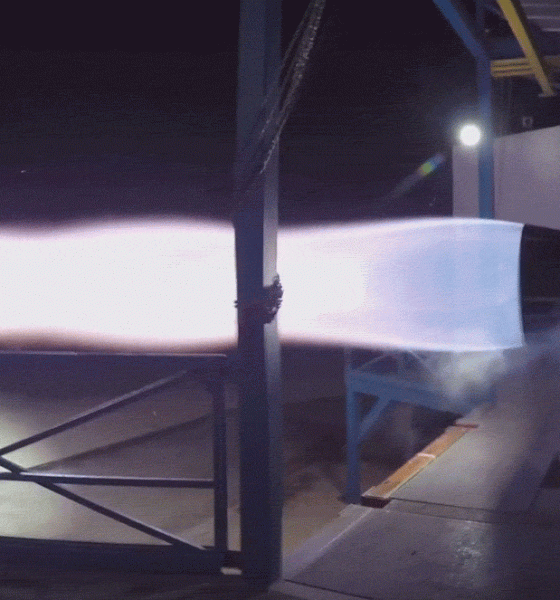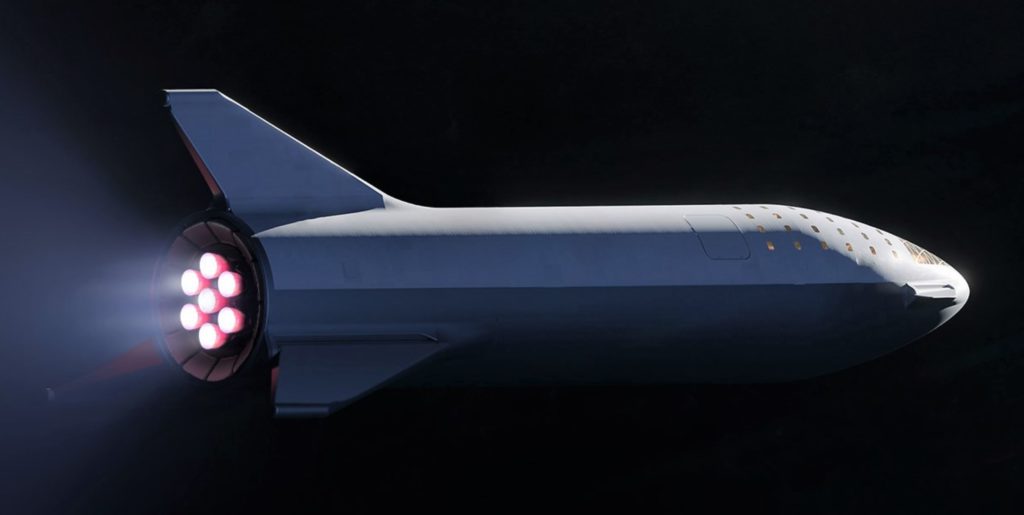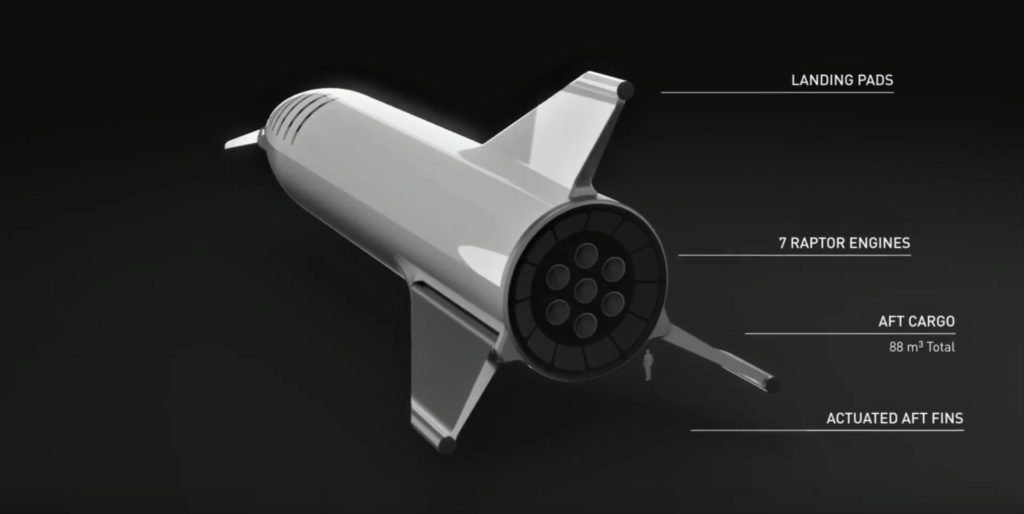

News
SpaceX’s Raptor engine nears flight-readiness for BFR spaceship hop tests
In a presentation that revealed plans for a private mission to the Moon in as early as 2023, SpaceX CEO Elon Musk dedicated a couple minutes to BFR’s booster and spaceship rocket engine of choice, Raptor. Musk had nothing but praise for SpaceX’s propulsion engineers and technicians, stating that he was “really excited” about the propulsion system’s advanced design.
SpaceX has completed over 1,200 seconds of firing across 42 main Raptor engine tests. pic.twitter.com/EhxbPjd8Cj
— SpaceX (@SpaceX) September 29, 2017
Judging from a total of 1200 seconds of hot-fires completed just under a year ago, it’s safe to assume that Raptor has soared beyond that measure. Most recently, photos captured earlier this summer showed that a new prototype was installed on SpaceX’s horizontal Raptor test stand in McGregor, Texas, looking nearly identical to the deep black Raptor nozzle shown in Monday’s presentation. Previous Raptor prototypes seen during testing or at the test stand appeared to have a nozzle closer to SpaceX’s silver Merlin 1Ds, whereas this newest iteration’s nozzle doesn’t seem to reflect the powerful spotlights surrounding it.
Perhaps not a coincidence, SpaceX’s propulsion engineering lead Tom Mueller stated in May 2018 that flight-ready Raptors were already “in work”, with the implication being that the finalized Raptor design had been completed and that manufacturing work was beginning in earnest. Barring an unexpected shift in testing strategies, SpaceX will optimize and verify Raptor’s flight design over the course of several hundred seconds of static fire tests, eventually leading into the same practices used for Falcon 9.
- A September 2018 render of Starship (then BFS) shows one of the vehicle’s two hinged wings/fins/legs. (SpaceX)
- In 2018, Musk decided to sidestep vacuum engines entirely, moving to 7 SL Raptors. (SpaceX)
“This is a stupidly hard problem and SpaceX engineering has done a great job with this design.” In a May 2018 tweet, Musk added that “this engine is something special.” – Elon Musk, 09/17/18
Prior to being installed on any BFR prototypes, all Raptors will thus go through acceptance testing in Texas, potentially followed by a full-up static fire of the first completed BFR spaceships. Falcon 9 boosters – capable of roughly 7600 kN (1.7 million lbf) of thrust – are routinely tested in McGregor, while a full BFR spaceship with 2017-grade Raptors (1700 kN at sea level) would produce 12,000 kN (2.7 million lbf) of thrust with all Raptors firing. However, due to the sheer difficulty of transporting something 9 meters in diameter by road, it’s more likely that SpaceX will need to build up a dedicated static fire and hop test facility near the coast of Texas, at a spot called Boca Chica.
An immense liquid oxygen (LOX) tank just arrived at @SpaceX's prospective Boca Chica, TX facility, likely to be dedicated to BFR & BFS testing. @NASASpaceflight forum user "Nomadd" caught some of the first detailed photos, as well as the tank's arrival at SpaceX land on July 11. pic.twitter.com/hr7SeA6BGw
— Eric Ralph (@13ericralph31) July 12, 2018
Getting to hop tests
As it turns out, massive propellant storage tanks (vacuum insulated) have already begun arriving at SpaceX’s Boca Chica facilities, currently dedicated to a duo of tracking and communications radars to be used for Crew Dragon communications. Over the course of the next 12 or so months, SpaceX is thus likely to expand and develop its Boca Chica facilities, culminating – if all goes well – sometime late next year with the first shipment of a prototype BFR spaceship from Port of Los Angeles, through the Panama Canal, to Port of Brownsville, Texas.
“I’m really excited about this engine design, I think the SpaceX propulsion team has done an amazing job – the SpaceX structures and aero team has done a phenomenal job in the design of this.”
“Even others in the aerospace industry don’t know what question to ask – once we could frame the question [with precision], the answers [for Raptor and BFR R&D] flowed.” – Elon Musk, 09/17/18

SpaceX has already completed the first composite segment (both a section of the fuselage and of a propellant tank) of the first BFR spaceship prototype, and Musk further stated that BFR’s structural engineers and technicians would begin fabricating the spaceship prototype’s propellant tank domes and engine section “soon”. A vast amount of work remains to be completed before that prototype will begin to look anything like an actual spaceship, and the exact fidelity SpaceX is hoping to achieve with it is unclear.
If the company tries to get as close as possible to a finished product (within reason, of course) before beginning propulsive hop tests in Texas, a very late-2019 debut of that test campaign could be a practical goal. It’s not a perfect comparison, but Falcon 9 is perhaps the best prior example of SpaceX’s speed of development, moving from structural fabrication and testing (albeit with Falcon 5 in mind) in 2006 and 2007 to a full-up orbital launch of the first Falcon 9 in mid-2010, with milestones like the first static fire of a booster octaweb and nine Merlin 1C engines 6-12 months prior.
For prompt updates, on-the-ground perspectives, and unique glimpses of SpaceX’s rocket recovery fleet check out our brand new LaunchPad and LandingZone newsletters!

News
Tesla FSD fleet is nearing 7 billion total miles, including 2.5 billion city miles
As can be seen on Tesla’s official FSD webpage, vehicles equipped with the system have now navigated over 6.99 billion miles.

Tesla’s Full Self-Driving (Supervised) fleet is closing in on almost 7 billion total miles driven, as per data posted by the company on its official FSD webpage.
These figures hint at the massive scale of data fueling Tesla’s rapid FSD improvements, which have been quite notable as of late.
FSD mileage milestones
As can be seen on Tesla’s official FSD webpage, vehicles equipped with the system have now navigated over 6.99 billion miles. Tesla owner and avid FSD tester Whole Mars Catalog also shared a screenshot indicating that from the nearly 7 billion miles traveled by the FSD fleet, more than 2.5 billion miles were driven inside cities.
City miles are particularly valuable for complex urban scenarios like unprotected turns, pedestrian interactions, and traffic lights. This is also the difference-maker for FSD, as only complex solutions, such as Waymo’s self-driving taxis, operate similarly on inner-city streets. And even then, incidents such as the San Francisco blackouts have proven challenging for sensor-rich vehicles like Waymos.
Tesla’s data edge
Tesla has a number of advantages in the autonomous vehicle sector, one of which is the size of its fleet and the number of vehicles training FSD on real-world roads. Tesla’s nearly 7 billion FSD miles then allow the company to roll out updates that make its vehicles behave like they are being driven by experienced drivers, even if they are operating on their own.
So notable are Tesla’s improvements to FSD that NVIDIA Director of Robotics Jim Fan, after experiencing FSD v14, noted that the system is the first AI that passes what he described as a “Physical Turing Test.”
“Despite knowing exactly how robot learning works, I still find it magical watching the steering wheel turn by itself. First it feels surreal, next it becomes routine. Then, like the smartphone, taking it away actively hurts. This is how humanity gets rewired and glued to god-like technologies,” Fan wrote in a post on X.
News
Tesla starts showing how FSD will change lives in Europe
Local officials tested the system on narrow country roads and were impressed by FSD’s smooth, human-like driving, with some calling the service a game-changer for everyday life in areas that are far from urban centers.

Tesla has launched Europe’s first public shuttle service using Full Self-Driving (Supervised) in the rural Eifelkreis Bitburg-Prüm region of Germany, demonstrating how the technology can restore independence and mobility for people who struggle with limited transport options.
Local officials tested the system on narrow country roads and were impressed by FSD’s smooth, human-like driving, with some calling the service a game-changer for everyday life in areas that are far from urban centers.
Officials see real impact on rural residents
Arzfeld Mayor Johannes Kuhl and District Administrator Andreas Kruppert personally tested the Tesla shuttle service. This allowed them to see just how well FSD navigated winding lanes and rural roads confidently. Kruppert said, “Autonomous driving sounds like science fiction to many, but we simply see here that it works totally well in rural regions too.” Kuhl, for his part, also noted that FSD “feels like a very experienced driver.”
The pilot complements the area’s “Citizen Bus” program, which provides on-demand rides for elderly residents who can no longer drive themselves. Tesla Europe shared a video of a demonstration of the service, highlighting how FSD gives people their freedom back, even in places where public transport is not as prevalent.
What the Ministry for Economic Affairs and Transport says
Rhineland-Palatinate’s Minister Daniela Schmitt supported the project, praising the collaboration that made this “first of its kind in Europe” possible. As per the ministry, the rural rollout for the service shows FSD’s potential beyond major cities, and it delivers tangible benefits like grocery runs, doctor visits, and social connections for isolated residents.
“Reliable and flexible mobility is especially vital in rural areas. With the launch of a shuttle service using self-driving vehicles (FSD supervised) by Tesla in the Eifelkreis Bitburg-Prüm, an innovative pilot project is now getting underway that complements local community bus services. It is the first project of its kind in Europe.
“The result is a real gain for rural mobility: greater accessibility, more flexibility and tangible benefits for everyday life. A strong signal for innovation, cooperation and future-oriented mobility beyond urban centers,” the ministry wrote in a LinkedIn post.
News
Tesla China quietly posts Robotaxi-related job listing
Tesla China is currently seeking a Low Voltage Electrical Engineer to work on circuit board design for the company’s autonomous vehicles.

Tesla has posted a new job listing in Shanghai explicitly tied to its Robotaxi program, fueling speculation that the company is preparing to launch its dedicated autonomous ride-hailing service in China.
As noted in the listing, Tesla China is currently seeking a Low Voltage Electrical Engineer to work on circuit board design for the company’s autonomous vehicles.
Robotaxi-specific role
The listing, which was shared on social media platform X by industry watcher @tslaming, suggested that Tesla China is looking to fill the role urgently. The job listing itself specifically mentions that the person hired for the role will be working on the Low Voltage Hardware team, which would design the circuit boards that would serve as the nervous system of the Robotaxi.
Key tasks for the role, as indicated in the job listing, include collaboration with PCB layout, firmware, mechanical, program management, and validation teams, among other responsibilities. The role is based in Shanghai.
China Robotaxi launch
China represents a massive potential market for robotaxis, with its dense urban centers and supportive policies in select cities. Tesla has limited permission to roll out FSD in the country, though despite this, its vehicles have been hailed as among the best in the market when it comes to autonomous features. So far, at least, it appears that China supports Tesla’s FSD and Robotaxi rollout.
This was hinted at in November, when Tesla brought the Cybercab to the 8th China International Import Expo (CIIE) in Shanghai, marking the first time that the autonomous two-seater was brought to the Asia-Pacific region. The vehicle, despite not having a release date in China, received a significant amount of interest among the event’s attendees.










